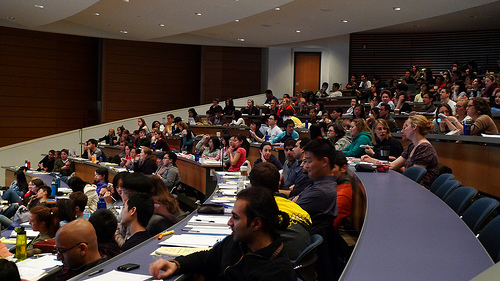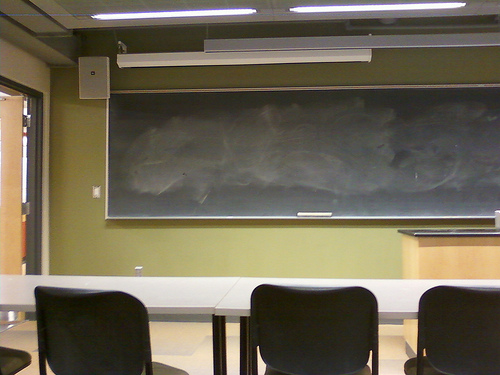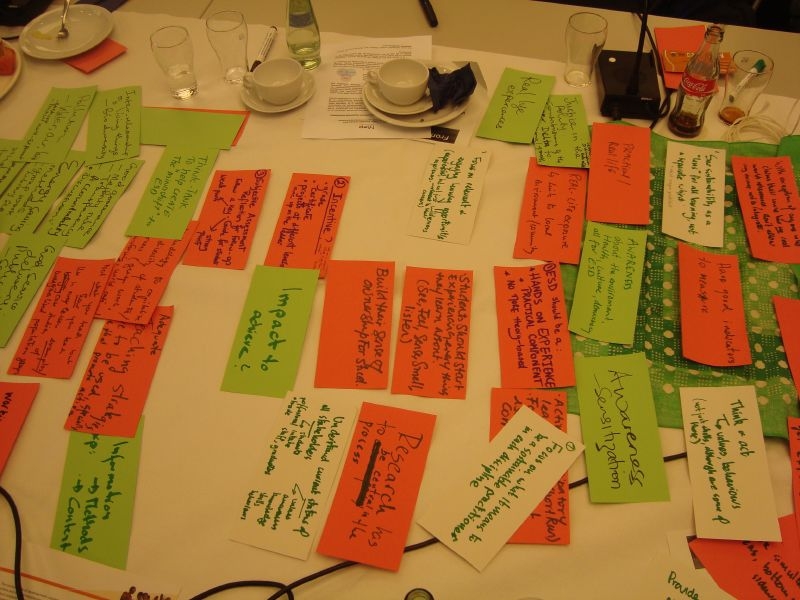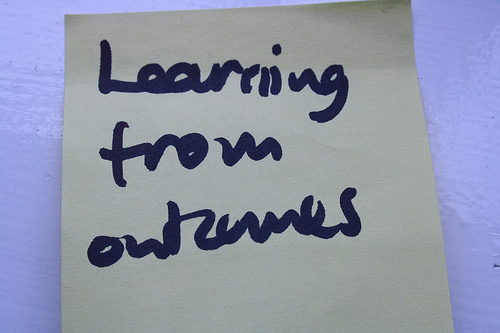Source: http://www.flickr.com/photos/velkr0/3472576304/sizes/m/in/photostream/
“It is one thing to recognize the benefit of engaging students in discussion yet quite another to master the skills necessary to effectively facilitate discussion” (Dallimore et al., 2004, pg. 104).
The learning environment is in constant flux; what works one class may not constitute success in the next. To promote effective discussion, we must strive to adapt to the ever-changing classroom environment. Dallimore et al. (2004) suggest students are encouraged to actively participate in classroom discussions when: participation is graded; the learners’ ideas and experiences are incorporated into the discussion; the facilitation is active; effective questions are asked; the classroom environment is supportive; and the instructor provides both positive and constructive feedback.
In reference to their role in classroom discussions, Sautter (2007, pg. 124) states, “The most important role of the instructor is one of shaping student behavior so that the students learn how to continuously improve in developing critical thought processes and well-constructed arguments.” Based on the recommendations provided by Davis (1993); Dallimore et al. (2004); McKeachie and Svinicki (2006); Brookfield (2006); and, Sautter (2007) an effective facilitator:
- sets shared-expectations for democratic and quality participation and encourages input from all learners during discussions;
- states a clear goal which outlines the purpose for each discussion;
- purposefully avoids the temptation to respond to every comment, and encourages the learners to develop confidence in both their own ideas and their ability to respond to each other;
- provides balanced feedback, by positively acknowledging insightful questions and points of discussion and identifying possible areas for improvement;
- involves the learner in evaluating the discussion, “How did it go?” “What are some areas for improvement in terms of quality, contribution, participation and facilitation?”
- varies the complexity of the questions asked to encourage different levels of thinking and that are, “…phrased somewhat broadly to challenge the students to take an active role in identifying concepts relevant to the discussion” (Sautter, 2007, pg. 124);
- openly acknowledges that differences of opinion enrich discussion, diffuses excessive tension, and suggests points of clarification when needed;
- is prepared to use a variety of methods of delivery (e.g. open discussion, brainstorming, small focus groups, pairing); and,
- takes notes of key points and allows time for a collaborative summary such that everyone has time to assess and synthesize the information presented and discussed.
The goal of any good classroom discussion is to increase learning and self-confidence. To an instructor devoted to the expectation of an inspiring and engaging discussion, silence can be both intimidating and threatening. However, an effective discussion requires time for personal thought. Many authors emphasize the importance of providing time for students to think individually and to record some thoughts after posing a question for discussion (e.g. Davis, 1993; Brookfield, 1995; McKeachie and Svinicki, 2006). This time can be enormously valuable in developing learners’ confidence and clarity in their knowledge, thoughts and ideas. In smaller seminar settings, it may be appropriate to pose questions for discussion prior to class via email so that the learners come prepared for conversation. The “think-pair-share” technique, where students record some thoughts, pair up with another student to discuss their thoughts, and then share their collaborative ideas with the rest of the class may also work well.
Instructors are often faced with the challenge of engaging students in the process of learning as well as the content of their learning, “…good education is always more process than product” (Palmer, 1998, pg. 94). An inclusive and democratic discussion can inspire critical thinking, shared learning, and a deep appreciation and understanding of the course subject matter.
“At the heart of discussion is the open and unpredictable creation of meanings through collaborative inquiry” (Brookfield, 2006, pg. 129).
Brookfield, S.D. 2006. The Skillful Teacher. Jossey-Bass, San Fransisco, CA.
Dallimore, E.J., Hertenstein, J.H., and Platt, M.B. 2004. Classroom participation and discussion effectiveness: student-generated strategies. Communication Education 53(1): 103-115.
Davis, B.G. (1993) Tools for Teaching. Jossey-Bass Inc., US.
McKeachie, W.J. and Svinicki, M. (2006) McKeachie’s Teaching Tips. Houghton Mifflin Company, New York.
Palmer, P.J. 1998. The Courage to Teach. Jossey-Bass. San Fransisco, CA.
Sautter, P. 2007. Designing discussion activities to achieve desired learning outcomes: choices using mode of delivery and structure. Journal of Marketing Education 29(2): 122-131.







